There was a time when the horror genre wasn’t healthy, a time when the general public had grown weary of stories laden with gore and giant monsters that didn’t reflect their lives or their fears. The horror genre was dying, slowly and painfully, asphyxiating on the poorly stocked shelves of mainstream bookshops.
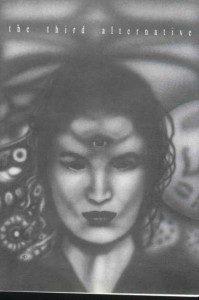 In 1994 The Third Alternative was first published. It brought together some of the sharpest and most interesting fiction in the horror, fantasy and sci-fi genres. It also showcased some of the finest writers in the genre, for people who knew where to look. Then, in 2007, the magazine was relaunched in the guise that readers have come to know and cherish, as Black Static.
In 1994 The Third Alternative was first published. It brought together some of the sharpest and most interesting fiction in the horror, fantasy and sci-fi genres. It also showcased some of the finest writers in the genre, for people who knew where to look. Then, in 2007, the magazine was relaunched in the guise that readers have come to know and cherish, as Black Static.
In 2013, Black Static is a feature of the genre, launching and enhancing the careers of hundreds of writers that provide some of the finest writing available in the genre. With excellent fiction and concise, focused columns from many respected names, Black Static sets a benchmark for quality in horror fiction and demonstrates that the pulse of literary horror is beating as steadily as our own.
This Is Horror took the opportunity to sit down with some of the key contributors, and readers of the magazine to try to nail down exactly what it is about Black Static that is so important to the horror genre that we all hold dear.
Simon Kurt Unsworth
Black Static fiction contributor and author of Quiet Houses
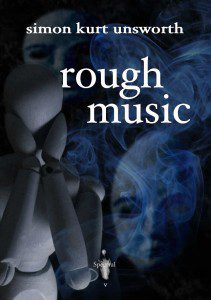 Picture this: I’m starting to think that I’ve come at writing ass-backwards. I’d been nominated for a World Fantasy Award with my first published story, sold a collection to the publisher of my dreams, got the cover artist I’d always wanted for the book and it was due to be launched at World Horror in Brighton. I’m beginning to worry that somehow I’d not paid my dues; I’d sold a collection to one of the best small presses around and yet, I’d had no magazine publications. All authors publish in magazines, I thought; it’s practically a rite of passage, so I should as well. I decided that I would try and get published in a magazine, one available on newsstands and in dubious corner shops, and that only when I’d done that could I call really myself an time-served author.
Picture this: I’m starting to think that I’ve come at writing ass-backwards. I’d been nominated for a World Fantasy Award with my first published story, sold a collection to the publisher of my dreams, got the cover artist I’d always wanted for the book and it was due to be launched at World Horror in Brighton. I’m beginning to worry that somehow I’d not paid my dues; I’d sold a collection to one of the best small presses around and yet, I’d had no magazine publications. All authors publish in magazines, I thought; it’s practically a rite of passage, so I should as well. I decided that I would try and get published in a magazine, one available on newsstands and in dubious corner shops, and that only when I’d done that could I call really myself an time-served author.
Coincidence time: just about as I decided this, I was in a dubious corner shop in Reading and I saw a copy of Black Static. I bought it, read it and loved it. It had a column by my mate Steve Volk, and a story by Steve Rasnic Tem (‘Charles’) that I loved. Now, I’d submitted to Black Static when it was The Third Alternative and been rejected, but lying on that hotel bed in Reading I started to think that this might be where I should send my stories. Tem’s ‘Charles’ felt like it had a similar tone to the stuff I was doing and, probably more importantly, Black Static was the only real UK magazine market for horror. It had (and still has) a great reputation, so my thinking was basically ‘start at the top and if they don’t want me, I’ll work downwards’. I submitted a story called ‘The Knitted Child’, and two weeks later got an email from editor Andy Cox that he’d accepted it. I can honestly say that this acceptance is one of the most important I’ve had, because it enabled me to achieve one of those self-imposed goals in a publication I consider to be both impressive and important. I’ve had two further stories published in Black Static since that first one and each of them has felt like validation, like I’m being accepted as part of a community I love. I’ve done readings at Black Static events, including in the pissing rain in Manchester with an audience of about eight, and I’ve loved every minute of my association with it. I’ll submit again when I’ve got something I think is good enough, but until then I can at least know: I’m part of the Black Static family. I’m happy.
Christopher Fowler
Former Black Static columnist and author of Hell Train.
 Black Static feels like a magazine from a bygone age. I christened my first column ‘Electric Darkness’ (mostly about film), which my esteemed colleague Mr Stephen Volk took over while I took a short leave of absence. As I did not wish to prise it from his cold, dead grip when I returned, I came up with a new more general column called ‘Interference’. Here’s my justification for the name.
Black Static feels like a magazine from a bygone age. I christened my first column ‘Electric Darkness’ (mostly about film), which my esteemed colleague Mr Stephen Volk took over while I took a short leave of absence. As I did not wish to prise it from his cold, dead grip when I returned, I came up with a new more general column called ‘Interference’. Here’s my justification for the name.
‘Running interference’ is about going against the natural order of things, and that, according to JG Ballard and many other intuitive futurologists, is where we’re headed, into a zone where the only fun left is enforced by corporations, and the fate of the world doesn’t matter so long as we get a thousand channels of hyper tense presenters desperately trying to make us believe they exist. Ballard believed the future has ended, and we now merely inhabit the rolling detritus that represents the shedding remains of the present. Luckily our virtual cages are velvet-lined, so we hear little and feel nothing except the warm, soothing relief of everlasting micturition. ‘Interference’ is also a form of intervention and obstruction. When I was a child it had an additional meaning; getting your inner thigh touched by a man in a gabardine mackintosh at the Odeon. So it’s a nicely loaded word that allows free range across a variety of subjects like culture, media and society.
I’ve never met Andy Cox, the editor, but I get the sense that he hand-prints every issue in his musty porn-filled bedroom. The beauty of writing for someone like Andy is that he’s hands-free. Interference is, in fact, the one thing I never get, beyond the occasional adjusted word count. Flying in the face of a conventional wisdom that suggests we should write what readers want to read, we cheery unpaid staffers fly about wherever our minds take us; this, surely, is the true definition of creative freedom.
Ross Warren
Black Static subscriber and editor at Dark Mind Press
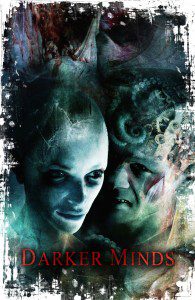 I first encountered Black Static with Issue Eight and have been a subscriber ever since. I have even collected the back issues in order to have the complete set on my shelves. Most magazines go into the recycling box when I’m done but these are most definitely ‘keepers’.
I first encountered Black Static with Issue Eight and have been a subscriber ever since. I have even collected the back issues in order to have the complete set on my shelves. Most magazines go into the recycling box when I’m done but these are most definitely ‘keepers’.
A great feature of the wonderful website that TTA Press, the acclaimed publisher of Black Static, maintain is the ‘Story Acceptance’ section which details stories they have purchased for future issues and can build a sense of excitement when you spot a favoured author or an intriguing story title by an author you are not familiar with.
Black Static balances its high quality fiction offering with some of the sharpest and highly informative non-fiction you are likely to find anywhere. Film and book reviews, by Tony Lee and Peter Tennant, respectively, are always balanced, thoughtful and considered. There are also opinion essays from the likes of Christopher Fowler, Mike O’Driscoll and Stephen Volk that always entertain and educate in equal measure.
Above all else, what you get after sampling an issue of what esteemed anthologist Ellen Datlow considers ‘The most consistently excellent horror magazine.’ is a deep sense of trust that editor Andy Cox knows a good story when he sees one.
Ray Cluley
Black Static fiction contributor
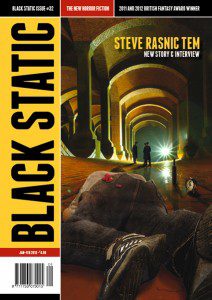 My introduction to Black Static came via The Third Alternative, a magazine I’d decided to try because I was drawn to its disturbing cover design. The first thing I learned, though, was that the issue I’d bought was to be the last issue. Sort of. From now on the magazine would be called Black Static, a title taken from a story by Paul Meloy.
My introduction to Black Static came via The Third Alternative, a magazine I’d decided to try because I was drawn to its disturbing cover design. The first thing I learned, though, was that the issue I’d bought was to be the last issue. Sort of. From now on the magazine would be called Black Static, a title taken from a story by Paul Meloy.
Cool, whatever.
I then proceeded to read the first story in the magazine, ‘Dying in the Arms of Jean Harlow (the Coming of the Autoscopes)’ by this same Meloy bloke and I thought – wow! After that came ‘The Word “Mermaid” Written on an Index Card’ by Doug Lain, and that’s when I knew for sure I was going to stick with this magazine, whatever it wanted to call itself.
I’m glad I did.
Black Static has introduced me to some fantastic writers (fantastic excellent/fantastic strange), many of whom have become my favourites in the field. Until Black Static, my horror itch was scratched by what I found in regular book shops, which limited me to Herbert, King, Rice, et al. Black Static showed me who else was out there, not only via the stories but also the reviews. Add to this some very engaging non-fiction and what you have is a bloody brilliant magazine, one that takes you to some very dark places, dares you to look at who – or what – lives there, and then leaves you to find your own way out.
I’d been writing for a while by this point but hadn’t been brave enough to submit anything until Black Static came along: I wanted to be part of that crowd. So I risked it. There’s still no thrill like a story acceptance in my opinion, but that first one from Andy Cox, for my first ever story submission*, is the best one I’ve had because it gave me a kind of approval, told me my aspirations weren’t all that far-fetched after all. Andy had also written some very positive comments with the acceptance, unaware it was my first ‘proper’ story, and so a lot of what has followed for me is thanks to his (accidental?) encouragement. I’ll often write a story these days with only Black Static in mind – where the hell else would ‘Pins and Needles’ fit?
I’ll always consider myself a Black Static reader before a Black Static writer, but I’ll be forever thankful for what it’s done for me on both accounts. According to Andy’s editorial comment in The Third Alternative’s last issue, the term ‘black static’ refers to the background noise heard in haunted places. The magazine Black Static, though, stands right out in front and says, “Hey, come here, I’ve got an incredible story for you. Actually, I’ve got several…”
May it keep telling them long into the night…
*I say first ever submission, but I once sent a story about time travel and dinosaur hunting to a women’s magazine. Funnily enough, they didn’t want it. I’ve learned to research my target audience a bit better since then.
Stephen Volk
Black Static columnist and writer of Ghostwatch
 What turned me on to TTA/Black Static (aside from its introducing me to fantastic writers shamefully new to me like Joel Lane, Gary McMahon, Carole Johnstone and Paul Meloy, to name but a few) was that this was horror a million miles away from faux-Stephen King and faux-James Herbert. The stories were mostly about Britain right now and mostly with a psychological or existential accuracy I could immediately relate to – and of a quality to treasure. As a bonus, the non-fiction and reviews were worlds away from the fatuous claptrap turned out by the ‘lad’s mag’ film and horror ’zines of my experience.
What turned me on to TTA/Black Static (aside from its introducing me to fantastic writers shamefully new to me like Joel Lane, Gary McMahon, Carole Johnstone and Paul Meloy, to name but a few) was that this was horror a million miles away from faux-Stephen King and faux-James Herbert. The stories were mostly about Britain right now and mostly with a psychological or existential accuracy I could immediately relate to – and of a quality to treasure. As a bonus, the non-fiction and reviews were worlds away from the fatuous claptrap turned out by the ‘lad’s mag’ film and horror ’zines of my experience.
This was good gear. It matched our time of anxiety. Which was why, when the editor asked me to write a regular comment piece, I jumped at the chance to talk to my own people about the only thing I can write about with anything approximating assurance: being a horror writer.
Andy Cox’s reputation is as a bit of a recluse. I’m sure he won’t mind me saying that. I have an image of him being rather like Number One in The Prisoner: and maybe under the ape mask there’s Patrick McGoohan, but in this shouty-wavy-armed “look at me” world, that’s kind of refreshing. It’s the work that counts for Andy. The stories. As David Lynch says, the donut has the flavour, not the hole. And though it’s dark as a coal mine in hell, Black Static has a flavour all of its own.
DAN HOWARTH
If you enjoyed our feature and want to read Black Static Magazine, please consider clicking through to our Amazon Affiliate links and making a purchase today. If you do you’ll help keep the This Is Horror ship afloat with some very welcome remuneration.

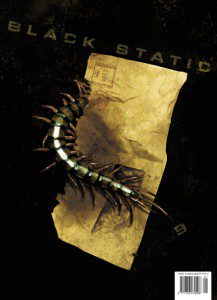









1 comment
Nice piece on a great magazine with observations from some terrific writers — I just want to highlight that Black Static also has a very good record of publishing women writers. In addition to Carole Johnstone as mentioned by Stephen Volk, some of its contributors include Lisa Tuttle, Nina Allan, Alison Littlewood, Maura McHugh, Aliette de Bodard, Mélanie Fazi, Priya Sharma, and This is Horror’s own V.H. Leslie, to name just a few.